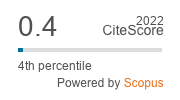Natural parasitism of eggs of yellow stem borer, Scirpophaga incertulas Walker (Lepidoptera: Crambidae) in rice ecosystem at Tiruchirappalli, Tamil Nadu
DOI:
https://doi.org/10.33307/entomon.v45i3.549Abstract
Three species of parasitoids viz., Telenomus dignus Gahan, Trichogramma japonicum, Ishii and Tetrastichus schoenobii Ferriere were recorded from the egg masses of rice yellow stem borer, Scirpophaga incertulas (Walker) in a field study. The extent of parasitism was high during Rabi (43.33 – 93.33 %) and low during Kharif (0 - 40.00 %). Parasitism by T. dignus was maximum in October (50.00 %), T. japonicum, in November (23.08 %) and T. schoenobii in February (55.55 %). dignus and T. schoenobii in combination parasitized maximum number of egg masses (41.82 %). Multiple parasitism by the three species was high in December (8.33 %) and January (7.14%). Parasitic potential was maximum, when T. schoenobii alone parasitised the egg masses followed by T. dignus and T. schoenobii in combination. Host density in the field influenced the extent of parasitism.


